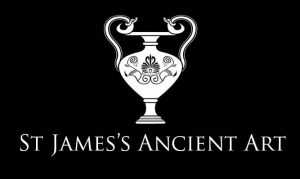Poppy or thistle amulets often appear in association with healing, the removal of pain and death. Amulets of this type were also connected to the Egyptian god Osiris, who was the god of agriculture as well as death and the afterlife. Thistles were common all over Egypt, but especially around the Nile. It is thought that they were peeled and boiled before consumption, with the thistle used in some parts of the world as a herbal treatment for hepatic disorders. As in modern symbolism, poppies also carried associations with rebirth and resilience due to the hardy nature of the plant. Indeed, there is evidence for the extraction of morphine from poppies in the ancient world.
To discover more about jewellery in the Ancient World, please visit our relevant post: Jewellery in Antiquity.







